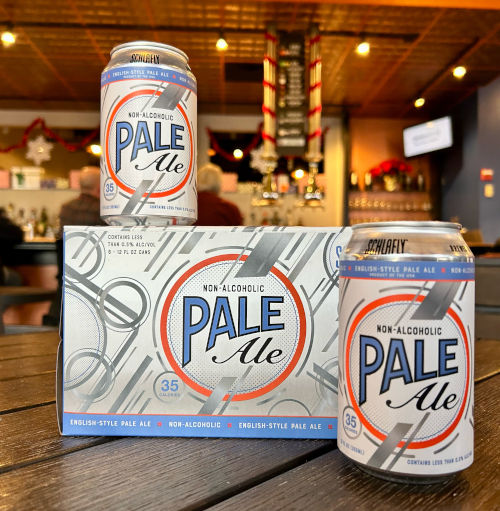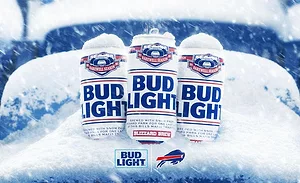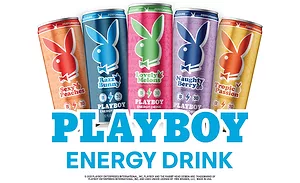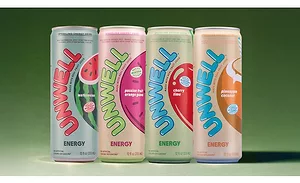Special Report
2024 Beer Report | Non-alcohol beer posts strong results
March 7, 2024
Special Report
2024 Beer Report | Non-alcohol beer posts strong results
March 7, 2024Image courtesy of DrinkSip
College basketball utilizes a number of metrics and analytics to evaluate the many teams that play in the NCAA. One that analysts and coaches will throw around is the “eye test,” which isn’t an official metric, but phrase that essentially signifies that a team’s performance on the court extends beyond their wins, losses and what the metrics indicate.
In U.S. beer market, the size of the non-alcohol beer segment might be the smallest compared with traditional beer segments, but the “eye test” shows that the segment is having a profound impact on the overall beer category.
Experts note that the proliferation of non-alcohol beer has allowed the category to retain consumers as beer contends with more competition in recent years.

“It is keeping more people in the beer category versus recruiting consumers that will then transition to drink alcoholic beer,” says Brian Sudano, CEO and president of S&D Insights LLC, Norwalk, Conn. “It is very much occasion driven.”
Ryan Toenies, client insights consultant for Circana; and Cara Piotrowski, client insights consultant for Circana, Chicago, also note that non-alcohol beer is more about keeping beer consumers in the category than recruiting new ones.
“Non-alcoholic beers are benefiting from switching within the beer market, so these products are likely aiding in beer buyer retention,” they say.
“Some consumers might switch entirely to non-alcoholic beers, substituting them for their regular alcoholic consumption, thereby causing a net loss in traditional beer sales,” they say. “Non-alcoholic options might create a distinct market segment rather than directly converting people to traditional beer, leading to parallel growth rather than direct substitution.”
Despite the residual impacts to traditional beer segments, non-alcohol beer has shown strong performance numbers.
Looking for a reprint of this article?
From high-res PDFs to custom plaques, order your copy today!
For the 52 weeks ending Jan. 28 in total U.S. multi-outlets, Chicago-based Circana data shows dollar sales for non-alcohol beer were nearly $368.7 million, a 29.2% increase, while case sales were up 20.3%. This performance builds upon what was reported in Beverage Industry’s 2023 Beer Report, which showed a dollar sales increase of 17.2% and case sales up 7.8% for the 52 weeks ending Jan. 1, 2023.
Supporting consumer demand
With non-alcohol beer sales continuing to build, experts note that this stems from a variety of health-focused trends, prompting consumers to opt for alcohol-free solutions.
“Broader trends in healthier lifestyles (e.g. Dry January, Sober October movements, alcohol moderation trends) are fueling growth of the non-alcoholic beer segment,” Circana’s Toenies and Piotrowski say. “Scale brewers are responding to consumer demand with recent launches of Corona NA, Sam Adams Just the Haze IPA, Guinness NA and Athletic Brewing.”
NielsenIQ’s Berg and Theriault echo similar sentiments noting that “health and wellness, lifestyle choices, mindful drinking, improved taste, functional ingredients and much better distribution” are fueling non-alcohol beer’s growth.
Delving further in the motivation for non-alcohol beer purchases, Berg and Theriault add that the segment is not facing the same competition from other non-alcohol beverage segments.
“Habit and preference from consumers, social pressure, marketing and branding, all enter in the equation,” they say. “Most NA consumers also drink alcohol products so it is more a matter of moderation and balance rather than competition.”
S&D Insights’ Sudano echoes similar sentiments. “Mocktails and non-alcoholic wine are not major competition for non-alcoholic beer as drinkers of these products tend not to drink beer or beer alternatives,” he says. “While non-alcoholic beer would be more attractive to lapsed beer drinkers that no longer engage in the number of drinking occasions that they previously were engaged.”
Circana’s Toenies and Piotrowski explain that this mentality from consumers could stem from non-alcohol beer’s association with traditional beer segments.
“Non-alcoholic beer has high interaction with traditional beer segments, like imports, crafts and domestics,” they say. “For the consumer, it’s an ‘easier’ switch that’s already located in the beer aisle and has a similar taste profile to traditional beer.”
The two consultants also pinpoint that the consumers making this switch are stemming from mature demographics.
“Non-alcoholic beer buyers are older, with over half of buyers being 55-plus [years old, and] 23% of NA beer buyers are millennials,” Toenies and Piotrowski say.
S&D Insights’ Sudano meanwhile highlights the subjective middle age demographic as well as younger legal drinking age consumers as contributing to the beer segment.
“Most likely consumer are younger consumers that generally don’t drink alcohol, middle age people that are pursuing a healthier life style and those that engage in other forms of adult products that do not fit with alcoholic beverages,” he says.
Top Non-Alcohol Beers
Source: Circana, Chicago. Total U.S. multi-outlets (grocery, drug, mass merchandisers, convenience, military commissaries, and select club and dollar retail chains) for the 52 weeks ending Jan. 28, 2024.
NielsenIQ’s Berg and Theriault also call attention to “millennials and Gen Z, fitness orientated consumers of all ages, as well as those with active lifestyles who want to maintain balance in their lives” as key demographics opting for non-alcohol beers.
While the short-term prospects of the non-alcohol beer segment looks promising, analysts do caution that the segment is not without its challenges.
“As more brands enter the non-alcoholic beer segment, the shelf will become crowded akin to the craft market years ago,” Circana’s Toenies and Piotrowski say. “It requires retailers to assess space allocation. Retailers may delist slow moving items accordingly.
“Additionally, as the alcohol moderation movement evolves, non-alcoholic beers may face increased competition from traditional non-alcohol beverages (e.g. soft drinks) as well as other dealcoholized beverages in wine and spirits,” they continue.
NielsenIQ’s Berg and Theriault also identify competition from other non-alcohol beverage categories, but add that “taste and quality consistency, stigma and misconceptions, [and] complex brewing processes” could hamper segment growth.
S&D Insights’ Sudano notes that as the segment hits scale the competition from other non-alcohol categories will take effect in varying occasions.
“This will create greater competition for consumer share of stomach for certain occasions,” he says.
Although this competition could be on the horizon, the non-alcohol beer segment still more than passes the eye test as a burgeoning segment.









